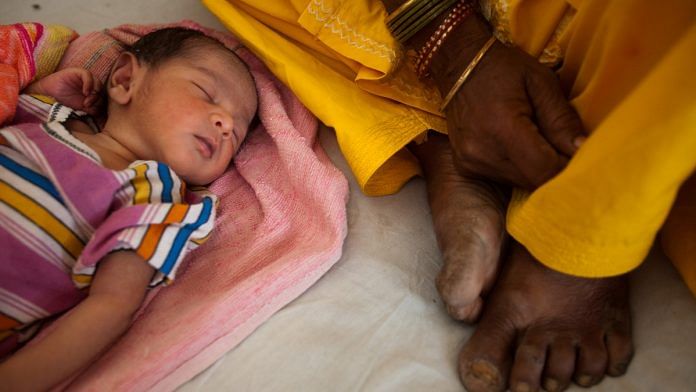The legal age for women to marry in India is 18, but a recent review of data showed that more than half of marriages in more than half of parliamentary constituencies — the equivalent of U.S. Congressional districts — involved an underage bride.
Just one constituency out of 543 had no women marrying before 18.
This observation, recently made by Indian journalist G.S. Mudur, drew on a trove of health, nutrition, and development data produced and made available recently by a team led by Professor of Population Health and Geography S.V. Subramanian and including Rockli Kim, a research associate at the Center for Population and Development Studies, and College senior Akshay Swaminathan.
Also read: ThePrint’s My543 – Select your constituency and check out the work your MP has done
Subramanian said the effort was intended to remedy a little-recognized but nonetheless important problem: the mismatch between the geographical units across which data on key human welfare indicators are usually released and the geographical units for which elected representatives are responsible, and the constituents for whom they make decisions that affect health and well-being.
“This is a generic problem across all countries,” Subramanian said. “For elected representatives, the areas they represent are never in sync with the unit at which data is typically released.”
Subramanian, a core faculty member of the Center for Population and Development Studies, targeted India for study not only because is it the world’s most populous democracy — with some 900 million voters — but also because its six-week general election is ongoing, concluding May 23.
Health data is generally released according to standard administrative areas: in the U.S., for instance, by county or town, and in India by district. The problem, Subramanian said, is that these administrative areas don’t necessarily coincide with the areas represented by the politicians designing government programs and making decisions about government spending.
Also read: Rahul Gandhi’s Amethi, Sonia’s Rae Bareli & Maneka-Varun’s Pilibhit rank low on nutrition
As with U.S. Congressional districts, which are often drawn with notoriously irregular boundaries to favor the electoral chances of one party or another, India’s 543 political constituencies for the lower house only rarely map directly onto the 640 districts where health and wellness data are regularly collected.
That mismatch not only compromises voters’ ability to reward or punish political leaders, but it also impedes politicians’ ability to get accurate information about the health and wellness of their constituents, and so prioritize their legislative agenda.
“Bureaucrats, typically, don’t have skin in the game; politicians do,” Subramanian said. “Politicians don’t have to present data because there’s not any, which may be convenient for them.”
Like the U.S. Senate, India has a two-house legislature with an upper chamber representing the nation’s 30 states. Much of the legislative power, however, resides in the lower house, which both originates legislation concerning taxes and spending and exerts power over the executive branch because it can hold no-confidence votes on the prime minister and other ministers. Called the Lok Sabha, the chamber, like the U.S. House, is elected according to population, arranged in constituencies.
The research was conducted with the aid of the Harvard Center for Geographic Analysis. Senior geographic information systems specialist Jeffrey Blossom worked closely with Subramanian in a procedure that involved breaking down existing data by subunits within the area where it was collected, determining which of those subunits lay within each political constituency, and then recombining them to provide a snapshot of health and other indicators in each constituency.
Also read: BJP-ruled constituencies fare worst on all maternal health indicators, study shows
Initial results, published in January in the journal Economic and Political Weekly, were developed for four indicators of childhood malnutrition: stunting, underweight, wasting, and anemia. Those results highlighted several constituencies in central and eastern India where the issue seems particularly severe. In the months since that initial publication, the team has used the same procedure to remap more than 100 health indicators — drawn from two national surveys, the National Family Health Survey and the National Sample Survey — to coincide with political boundaries.
Among the indicators available are an array of vaccination rates, diarrhea prevalence, overweight data, education and literacy, marriage data, information on family planning, and maternal and child health data.
Though the aim is to provide information for priority-setting and accountability, Subramanian said he and Blossom decided to keep the names of individual legislators out of the data sets to avoid the exercise being seen as political. Instead, they’ve provided the data on an “India Factsheet” website, publicly available and open to interested outlets, such as Mudur, who did the analysis of underage marriage, or a second outlet, The Print, which is providing information on all 543 constituencies based on Subramanian and his team’s research.
“We are providing a resource,” Subramanian said. “A lot of journalists are asking me, ‘Do you think it’ll make a difference?’ I don’t know, we’ve never done it before. But surely it cannot hurt to have more information. It is time the electoral and political discourses in India were based on data directly on the welfare of its population.”
This article was originally published in The Harvard Gazette.



